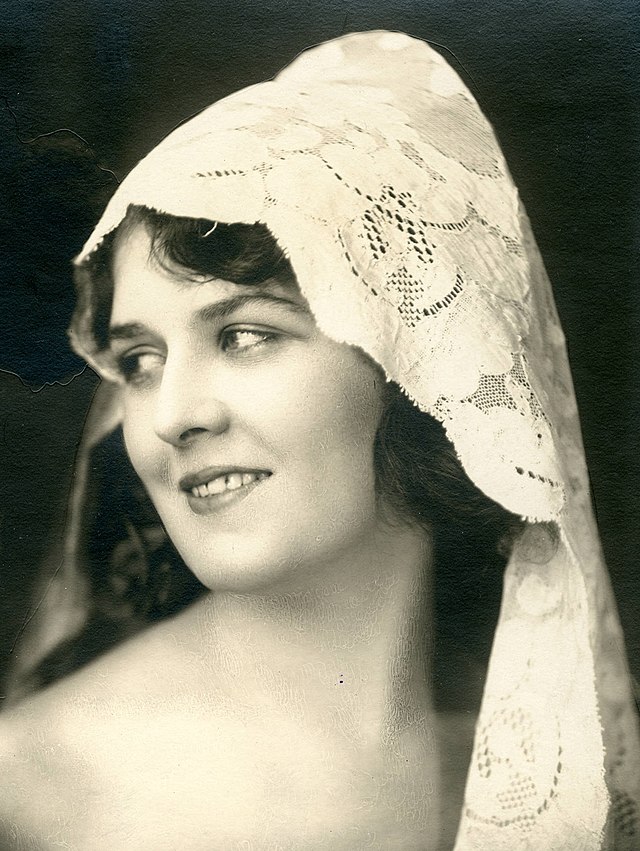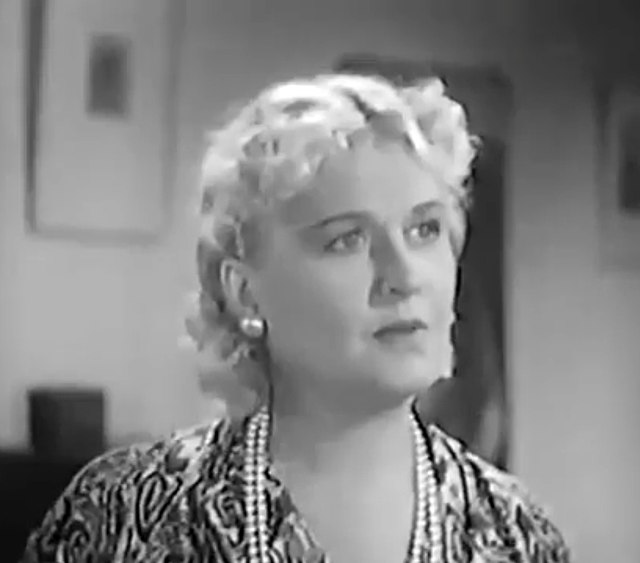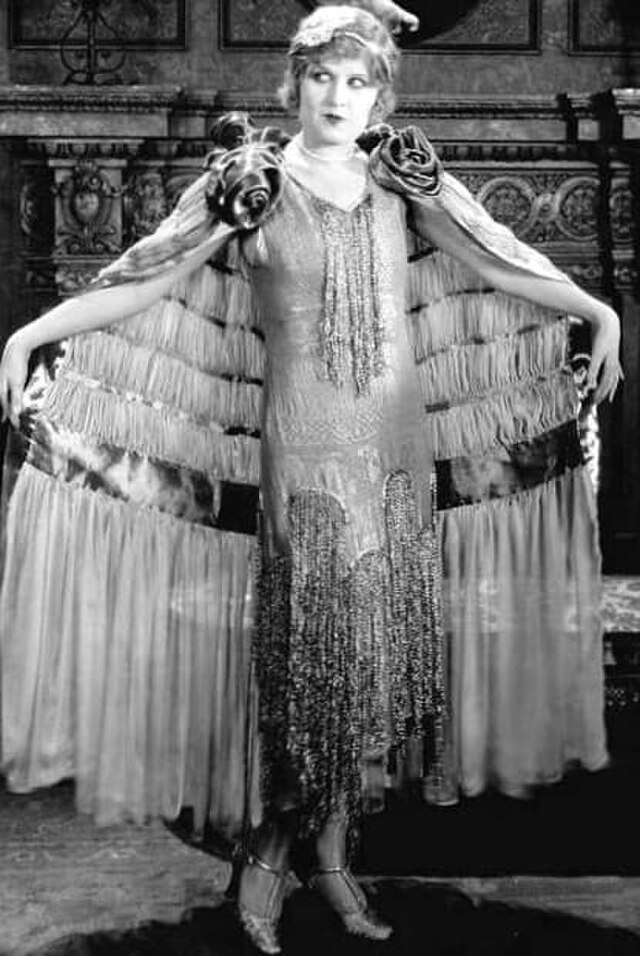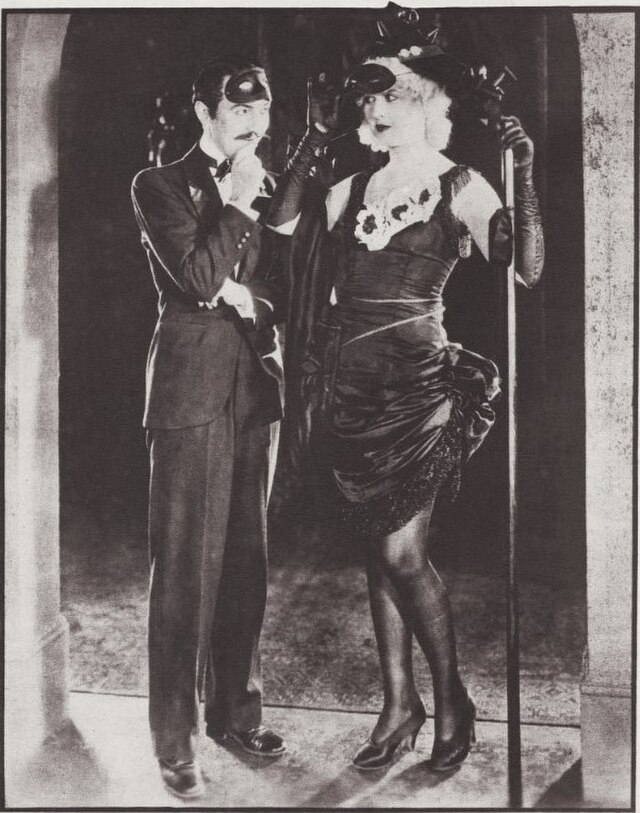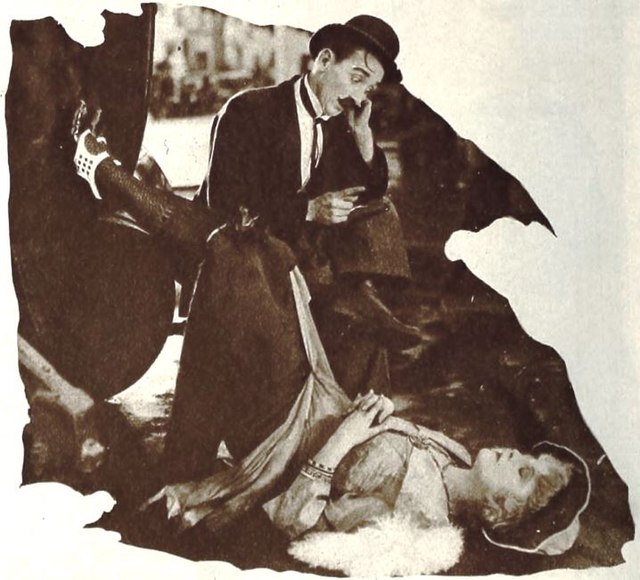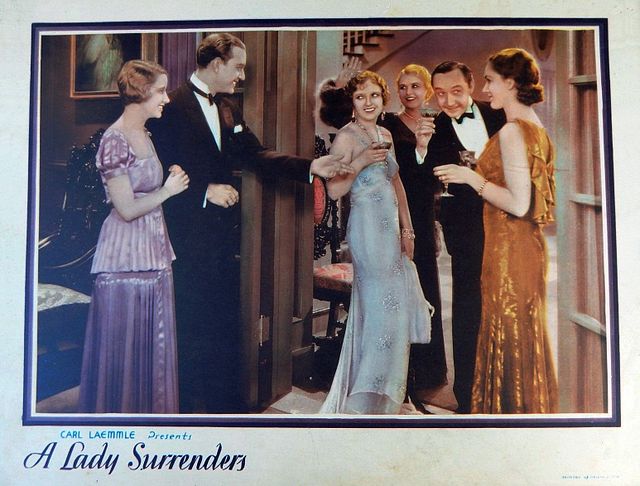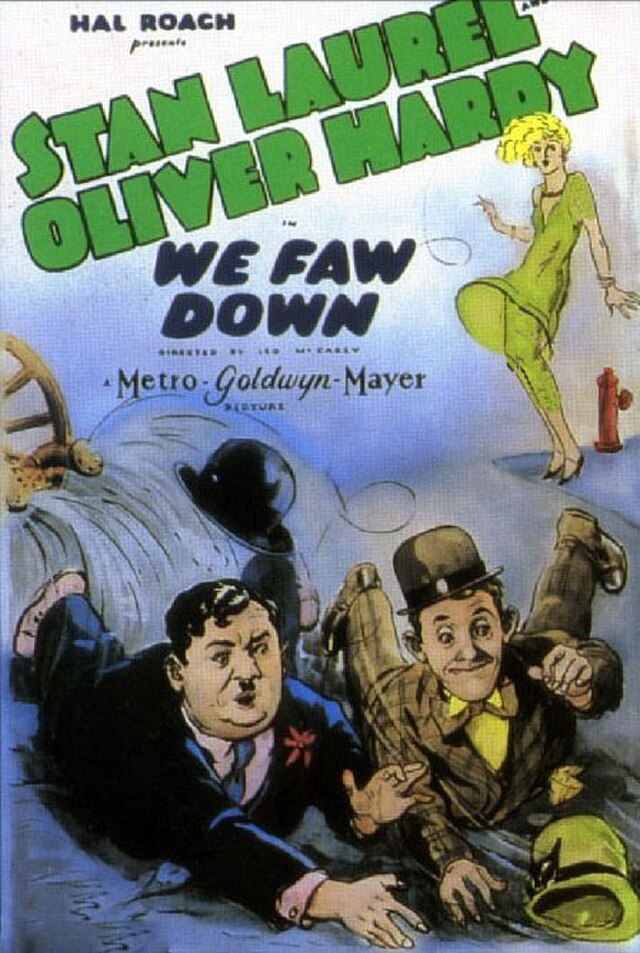Vivien Oakland
back| Full Name | Vivian Ruth Anderson |
| Stage Name | Vivien Oakland |
| Born | May 20, 1895 |
| Birthplace | San Francisco, California, USA |
| Died | August 1, 1958 |
| Buried | Chapel of the Pines Crematory, Los Angeles, California, USA |
| Married to | John T. Murray (actor, 1915–1957; his death) |
| Children | Unknown |
| Notable films | Sons of the Desert (1933) - Way Out West (1937) - One Rainy Afternoon (1936) - Blotto (1930) - Babes in Toyland (1934) |
Vivien Oakland
Hollywood's Unsung Comedy Queen
Vivien Oakland (1895–1958) was a versatile American actress known for her sharp comedic timing and work in early Hollywood, particularly alongside Laurel and Hardy. Born in San Francisco, she began her career in vaudeville before transitioning to silent films in the 1910s.
Oakland excelled in playing the "straight woman" in slapstick comedies, often portraying wives or authority figures who balanced the chaos around her.
Her most famous roles include Sons of the Desert (1933) and Blotto (1930), where her restrained yet witty performances provided the perfect foil to Laurel and Hardy's antics.
Related
Vivien Oakland
Biography and Movie Career
Vivien Oakland was one of the unsung heroines of early Hollywood, known for her impeccable comedic timing, wide versatility, and roles alongside some of the greatest stars in film history. A stalwart of early cinema, she was often cast in "straight woman" roles in comedies, particularly in films with the legendary duo Laurel and Hardy. Behind her engaging screen presence lay a fascinating personal and professional journey.
Early Life and Beginnings
Vivien Oakland, born Vivian Ruth Anderson on May 20, 1895, in San Francisco, California, was the daughter of Swedish immigrants. Raised in a multicultural environment, she grew up in a bustling city that had just rebuilt after the devastating 1906 earthquake. Vivien’s early life in San Francisco offered her exposure to theatre, vaudeville, and the arts. Her Swedish roots remained an important part of her identity, and she grew up bilingual, speaking both Swedish and English.
From a young age, Vivien was drawn to the performing arts. The vaudeville stage, with its mix of comedy, music, and drama, fascinated her, and it wasn’t long before she became involved in local theatre productions. The early 1910s were a time when vaudeville was still thriving across the United States, and Vivien’s natural charisma made her a popular performer.
Entering the World of Film
Vivien’s transition from vaudeville to cinema came naturally as the burgeoning movie industry began to dominate entertainment. Silent films were emerging as a major form of popular art, and Vivien made her film debut in 1915, around the same time that Hollywood was solidifying its place as the center of the film world.
Her first roles were modest, but she quickly earned a reputation as a gifted comedic actress. Vivien possessed a rare ability to anchor humorous scenes, often playing the grounded character in an ensemble of wild comedic figures. By the 1920s, she was frequently cast in silent film comedies produced by studios like Hal Roach and Keystone, known for creating slapstick legends like Charlie Chaplin, Harold Lloyd, and Buster Keaton.
The Laurel and Hardy Years
While Oakland had appeared in numerous films before, her work with Laurel and Hardy during the 1930s elevated her status as a character actress. Oakland was a perfect complement to the comedy team, providing the steady, rational presence that contrasted beautifully with the absurd antics of Laurel and Hardy.
She made her mark with standout performances in films like Blotto (1930), Sons of the Desert (1933), and Way Out West (1937), which remain classics in the history of film comedy. Her role in Sons of the Desert was particularly memorable—Oakland played the exasperated wife of Hardy’s character, and her ability to hold her own in scenes with the famous duo won her high praise. While Laurel and Hardy brought physical humor, Oakland offered sharp, witty counterpoints.
Personal Life and Marriage
Vivien Oakland’s personal life was closely intertwined with her professional career. In 1915, she married fellow actor John T. Murray, a well-known vaudeville performer who also made the transition into film. The two had met during their early years on the vaudeville circuit, and their partnership extended into their careers in Hollywood. They often appeared together in films, both as a couple and as individual performers.
Though they had a strong personal and professional bond, Vivien and John T. Murray did not have children. Vivien’s life was deeply focused on her work in the film industry, which required relentless commitment. The couple was married for over four decades, until Murray’s death in 1957. Their marriage was known for its strength and longevity in an industry notorious for its fleeting relationships.
Passions and Dedication to Craft
Despite her seemingly effortless performances, Oakland was dedicated to honing her craft. She admired the work of silent film stars who could convey deep emotion through subtle movements and expressions. This skill made her transition into sound films successful, as her ability to mix silent-era subtlety with spoken dialogue created a unique style.
While her most famous roles were in comedy, Oakland had a wider range of talents than many realized. She appeared in dramas, westerns, and musical films, showcasing her versatility. Her dedication to acting was her true passion—whether in vaudeville, silent film, or talkies, Vivien Oakland poured her heart into each performance. She remained active in films well into the 1940s, though her career began to wane as the studio system shifted toward younger stars.
Later Years and Decline
As Hollywood evolved in the late 1940s and early 1950s, Vivien Oakland found fewer roles coming her way. By then, new styles of acting and comedy were emerging, and the veterans of the silent and early sound eras were often overlooked by studio executives. Nonetheless, she remained resilient, making occasional appearances in films and supporting her husband, whose health was in decline.
The death of her husband, John T. Murray, in 1957 was a profound blow to Vivien. The two had been a close team for over forty years, both personally and professionally. Shortly after his death, Vivien’s own health began to falter.
On August 1, 1958, Vivien Oakland passed away at the age of 63 in Hollywood, California. The cause of death was attributed to a long illness, possibly related to heart disease, although details were not widely publicized. Her death marked the end of an era for early film comedy and the vaudeville tradition that she had helped keep alive during Hollywood’s formative years.
Legacy
Vivien Oakland was laid to rest at Chapel of the Pines Crematory in Los Angeles. Though she never achieved the superstar status of some of her contemporaries, her contributions to cinema were significant. She appeared in over 150 films, leaving behind a body of work that continues to be appreciated by fans of early film comedies.
Her comedic skill, timing, and ability to play strong female roles in an era dominated by male comedians ensured her a place in the history of early Hollywood. Whether as the exasperated wife, the dignified matron, or the clever comedic foil, Vivien Oakland will always be remembered for the grace and charm she brought to the screen.
Vivien Oakland’s life was a testament to the early days of Hollywood, a time when vaudeville, silent films, and talkies intersected, and new cinematic legends were born. With an unwavering dedication to her craft and a career that spanned nearly four decades, she left an indelible mark on the world of film comedy, solidifying her place as one of its unsung heroes.
Short Video on Vivien Oakland
Analysis of Vivien Oakland’s Acting Style:
Vivien Oakland’s acting style was characterized by a natural blend of understated elegance, sharp wit, and impeccable comedic timing. In an era when many actors leaned toward broad, exaggerated performances, particularly in silent films and early talkies, Oakland stood out for her ability to deliver more nuanced and grounded portrayals. Her performances were often marked by her ability to play the “straight woman” in comedies, a role that requires restraint and subtlety in the face of chaotic, slapstick humor.
Comedic Subtlety and Restraint
In the slapstick comedies she was known for, particularly in her work with Laurel and Hardy, Oakland played characters who brought balance and structure to the humor. While the male leads often engaged in absurd, physical comedy, Oakland's characters—often wives or authority figures—were more subdued, responding with exasperation, disbelief, or stoic patience. This allowed the comedic leads to shine while grounding the film’s narrative.
Rather than vying for attention in a scene, Oakland elevated the humor by reacting in a way that felt organic. Her facial expressions and body language would communicate her frustration or confusion without resorting to over-the-top antics. For example, in Sons of the Desert (1933), her role as Mrs. Hardy was a masterclass in comedic restraint. While Hardy and Laurel engage in a series of ridiculous lies to attend a convention, Oakland’s reactions, from arched eyebrows to her biting dialogue, perfectly punctuate the humor, providing a foil to the antics without overshadowing them.
Emotional Authenticity
Despite often being cast in comedic roles, Oakland’s performances were imbued with emotional authenticity. Even when portraying characters who were on the receiving end of a joke, she brought a sense of dignity to her roles. Her characters were often more intelligent or sensible than the men around her, yet she would play these roles with warmth and relatability rather than arrogance.
This authenticity made her characters more than just one-dimensional foils or nagging wives; they felt real and well-rounded. In films like We Faw Down (1928), her portrayal of Mrs. Hardy, frustrated with her husband’s lies, demonstrated a keen understanding of comedic timing, but also layered it with genuine human emotion—she wasn’t merely playing the angry wife but a character dealing with real emotions in absurd situations.
Versatility Across Genres
Though best known for her comedic roles, Oakland’s style was also versatile enough to fit into a range of genres. She effortlessly transitioned from comedy to drama, westerns, and musicals, adapting her style to suit the tone of each film. Her background in vaudeville likely contributed to this adaptability, as vaudeville performers were required to master a variety of performance styles, from slapstick to melodrama.
In dramas, Oakland could shift to a more understated, serious approach, focusing on subtle gestures and quieter dialogue delivery, allowing the emotional weight of her scenes to carry through. Her versatility meant that even in comedic roles, she could bring elements of pathos or gravitas when needed, giving her characters more depth.
Physical Presence and Movement
While Oakland was not known for the same kind of physical comedy as Laurel and Hardy, she had a strong physical presence that allowed her to effectively complement their performances. She knew how to use her body language to enhance a scene, whether it was a simple turn of her head, a disapproving glance, or standing in a doorway with crossed arms to express frustration or suspicion.
Her understanding of comedic timing extended to her physicality—she would often react just a beat slower or faster than her co-stars, creating a contrast that heightened the humor. In silent films, where actors had to rely heavily on gestures and expressions, her understated movements stood out against the broader, more exaggerated physical comedy of her co-stars.
Grace Under Pressure
Another defining feature of Oakland’s acting style was her grace under pressure. She frequently played characters placed in chaotic or absurd situations, yet her performances never felt frantic or out of control. Oakland portrayed a sense of calm amid the storm, which made her reactions all the more powerful and funny. In films like Blotto (1930), her calm demeanor as Mrs. Laurel, even when plotting revenge on her husband for sneaking out, created a hilarious contrast to the ensuing chaos of the situation.
Her acting style reflected the essence of classic comedic timing: knowing when to let the scene breathe and when to react. Oakland understood that sometimes doing less was more, and this restraint made her performances feel more modern compared to the more exaggerated styles of many early film actors.
An Unassuming Star
Vivien Oakland’s acting style was never about grandstanding or drawing undue attention to herself. Her approach was unassuming, often serving the greater needs of the scene rather than seeking individual attention. This selflessness made her an ideal supporting actress, particularly in ensemble comedies where every character needed to work in harmony.
Despite not always being the central figure in her films, Oakland had a way of leaving a lasting impression. Her characters, though often placed in the background, had a quiet strength and presence that made audiences remember her performances long after the final scene.
Awards and Recognition
Vivien Oakland, despite her long and successful career in Hollywood, did not receive many formal awards or major recognition during her lifetime, especially by today’s standards. Much of her career took place during a period when recognition for supporting and character actors, particularly in comedy, was not as common.
However, Oakland’s contributions to early Hollywood, particularly in her roles in comedy films with stars like Laurel and Hardy, have earned her a lasting legacy among film historians and enthusiasts. Below is an overview of the recognition she did receive:
Posthumous Recognition
- Legacy in Classic Hollywood Comedy
Although Vivien Oakland did not receive formal awards during her lifetime, her work has been widely recognized by classic film fans and historians. Oakland is often remembered for her invaluable contributions to comedy, particularly in her performances alongside Laurel and Hardy, where she perfected the role of the “straight woman” in comedic settings.
- Reevaluation of Women in Early Hollywood
In recent years, there has been greater appreciation for the contributions of actresses like Vivien Oakland, who played crucial supporting roles in the development of Hollywood comedies. Oakland is now regarded as one of the underrated comedic talents of her time, contributing greatly to the success of films like Sons of the Desert and Blotto.
Preservation of Films
Several of the films she appeared in, particularly the Laurel and Hardy comedies, have been preserved and celebrated as part of classic film archives. This includes:
- Sons of the Desert (1933)
- Blotto (1930)
- Way Out West (1937)
These films continue to be screened at classic film festivals and included in DVD and Blu-ray collections, with Vivien Oakland’s performances often highlighted for their key contributions to the films’ success.
Recognition by Laurel and Hardy Fans
Vivien Oakland holds a special place in the hearts of fans of Laurel and Hardy. She is often celebrated at fan events and film festivals dedicated to the iconic duo. These events frequently highlight her roles in films like Sons of the Desert and Blotto, and she is remembered as one of the greatest supporting actresses who worked with the team.
Notable Film Lines from Vivien Oakland
From "Sons of the Desert" (1933):
Vivien Oakland played Mrs. Hardy in this famous Laurel and Hardy comedy. One of her most famous exchanges was during the film’s climactic scene, where the truth about the convention is revealed.
- Mrs. Hardy (Oakland): "You were at the convention!"
In this line, her tone and delivery shift from skepticism to outrage as she confronts her husband’s deception. Her exasperation builds throughout the film, and this moment encapsulates her no-nonsense approach, creating a perfect foil for Hardy’s bumbling character.
- Mrs. Hardy: "You’ll never go to another convention as long as you live!"
This line follows the final unraveling of the husbands' lies, delivered with a mix of frustration and certainty, showing her character’s firm control over her wayward husband.
From "Blotto" (1930):
In this Laurel and Hardy short, Vivien plays the disapproving wife of Stan Laurel’s character. She eventually discovers her husband’s secret plan to sneak out for a night of fun, leading to a memorable exchange.
- Mrs. Laurel (Oakland): "So, you're going out tonight, are you? We’ll see about that!"
This line, delivered with a blend of suspicion and authority, sets up her eventual revenge on her husband by spiking his drink with what he thinks is alcohol but is actually a harmless liquid.
Movies featuring Vivien Oakland
1910s
1915
- Court House Crooks
Synopsis: One of Vivien Oakland’s earliest appearances in a silent comedy short, where a group of crooks attempts to outsmart the law, but chaos ensues.
1917
- A Dog Catcher’s Love
Synopsis: A comedic silent short about a dog catcher who falls in love while trying to balance his chaotic job.
1920s
1923
- The White Flower
Synopsis: A silent drama about a Hawaiian princess torn between traditional duties and her love for an American visitor.
1925
- Innocent Husbands
Synopsis: Vivien appears alongside Charley Chase in this comedy where a husband attempts to avoid compromising situations while his wife is out of town, only for misunderstandings to pile up.
1927
- Fluttering Hearts
Synopsis: Another comedy short with Charley Chase. Vivien plays a character trying to secure a wedding dress in time for an important event, only to get into a series of mishaps.
1928
- We Faw Down
Synopsis: A silent short comedy featuring Laurel and Hardy. Vivien Oakland plays Mrs. Hardy, in this film where the duo tells their wives they're attending a business meeting, but instead sneak out to meet two women. Their plan falls apart in classic Laurel and Hardy fashion, leading to a series of hilarious misunderstandings and slapstick situations. Vivien’s performance as the suspicious, no-nonsense wife is a highlight, helping set up the comedic chaos.
1930s
1930
- Blotto
Synopsis: One of Vivien’s most famous films, where she stars alongside Laurel and Hardy. The plot involves Laurel secretly planning a night out with Hardy by lying to his wife (Vivien), but things go awry when she finds out and spikes their drinks.
1931
- Our Wife
Synopsis: A Laurel and Hardy short comedy where Vivien plays Hardy’s fiancée. The plot follows Hardy and Laurel as they try to elope with Vivien but face a series of comical obstacles.
1932
- Any Old Port!
Synopsis: Another Laurel and Hardy short where Vivien Oakland plays a minor role. The film centers on the duo who get involved in a boxing match to help a damsel in distress.
1933
- Sons of the Desert
Synopsis: One of her most iconic roles. Vivien plays Mrs. Hardy in this Laurel and Hardy feature film. The story follows Laurel and Hardy as they lie to their wives in order to attend a convention, only for their deception to unravel with hilarious consequences.
1934
- Babes in Toyland (March of the Wooden Soldiers)
Synopsis: Vivien has a small role in this beloved Laurel and Hardy adaptation of the operetta Babes in Toyland, filled with whimsical fantasy and comedy.
1936
- One Rainy Afternoon
Synopsis: Vivien plays a supporting role in this romantic comedy about a French film star who accidentally kisses the wrong woman, sparking a series of public scandals and misunderstandings.
1937
- Way Out West
Synopsis: A major Laurel and Hardy film where Vivien Oakland plays a prominent supporting role. The comedy duo must deliver the deed to a gold mine to a prospector’s daughter, but face interference and hilarious mishaps along the way.
1938
- Block-Heads
Synopsis: A Laurel and Hardy film where Vivien has a small supporting role. Hardy believes he’s bringing home his long-lost war buddy (Laurel) for a pleasant visit, only to cause chaos for his family and neighbors.
1940s
1940
- Li'l Abner
Synopsis: A comedy based on the popular comic strip. Vivien Oakland has a minor role in this story about the loveable yokel Li'l Abner and his adventures in Dogpatch.
1941
- Tillie the Toiler
Synopsis: A comedy film based on the comic strip of the same name. Vivien appears in a supporting role, in a story about a secretary who aspires to be a famous fashion designer while navigating love and work.
1944
- San Fernando Valley
Synopsis: A musical western where Vivien plays a small role in the story of a ranch owner who hires singing cowboys to run his ranch.
1950s
1950
- Ma and Pa Kettle Go to Town
Synopsis: Vivien has a small part in this popular comedy film about the Kettle family, country folk who head to the big city and get involved in various misadventures.
1951
- The Lemon Drop Kid
Synopsis: A Bob Hope comedy where Vivien appears in a minor role. The story follows a small-time con artist who has to raise money to pay off a gambling debt by Christmas.
Final Years
Vivien Oakland's filmography extends well beyond these films, but many of her later roles were smaller, uncredited parts as her career began to wind down by the late 1940s and early 1950s. Despite her shift away from major roles, she continued to work in the industry until shortly before her death in 1958.
Her collaborations with Laurel and Hardy are considered the highlights of her career, particularly in films like Sons of the Desert and Blotto. Vivien Oakland remains fondly remembered for her comedic brilliance, supporting iconic comedians while bringing warmth and wit to every role she played.

